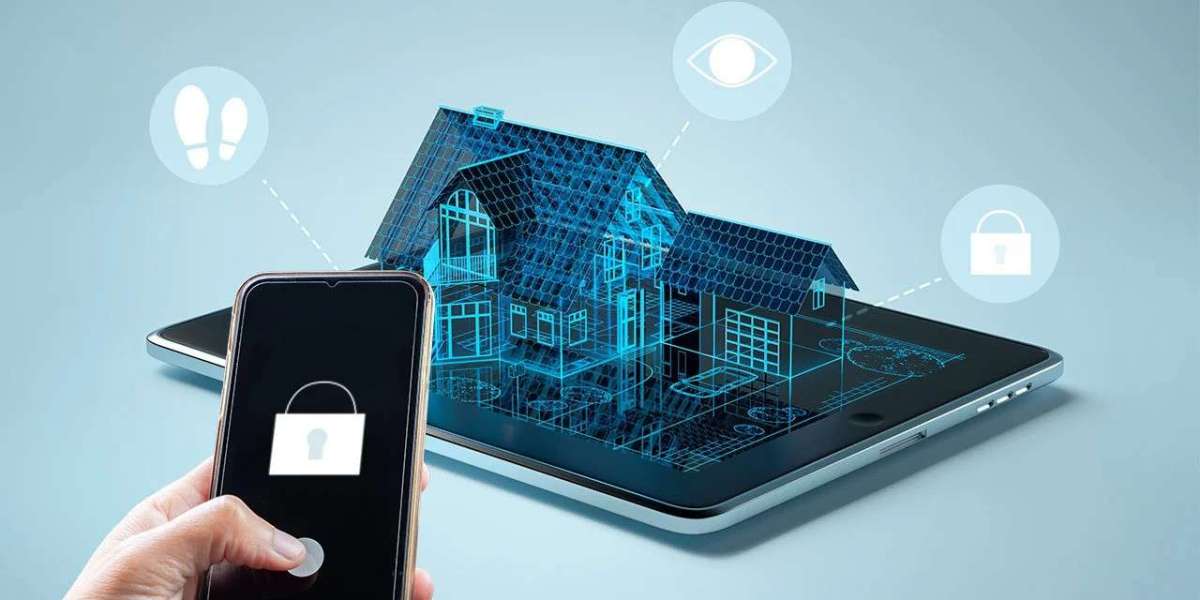Home burglaries happen every 25 seconds in Canada. That’s not just a number; it's a wake-up call. Your home—your sanctuary—deserves more than just a lock and a hope for the best. The good news? Setting up your own home security system isn't as overwhelming as it sounds. In fact, with a bit of guidance, you can transform your home into a fortress of safety and peace.
You don’t need a professional with a hefty bill to get started. You need the right tools, some smart planning, and a bit of confidence to tackle the process yourself. Whether it’s deciding on cameras, motion sensors, or smart locks, this guide will take you through the steps in a straightforward way, saving you time, money, and a lot of unnecessary stress. Let's get started and make your home as secure as it should be—without breaking a sweat or the bank!
Step 1: Assess Your Home’s Vulnerabilities
Before diving into the equipment, take a walk around your property. Look for possible entry points that might be vulnerable, such as poorly lit areas, low windows, or old doors. Knowing your home’s weak spots will help you decide what type of security equipment is necessary and where it should be placed.
Pay attention to areas that are obscured by bushes or trees, as these are favorite spots for burglars to approach undetected. Write down these points and note any additional risks such as sliding doors or old locks. The key here is to take an objective view of your property. This step will set the foundation for your entire security system.
Step 2: Choose Your Security System Components
There are a lot of options when it comes to home security systems. But don’t worry—you don’t need everything. Here are the most essential components to consider:
1. Security Cameras
Cameras are crucial for both deterrence and documentation. Outdoor camera systems are particularly useful for monitoring the perimeter of your home and keeping an eye on anyone approaching your property. Cameras with night vision, motion detection, and remote access provide additional value. Place them in high-risk areas identified in Step 1, such as entrances, driveways, and rear doors.
2. Door and Window Sensors
These sensors detect when doors or windows are opened, alerting you immediately to potential intrusions. Install sensors on all ground-level openings and on any upper-level access points, especially those accessible from balconies or ladders. Consider integrating these sensors with a central control hub that will send alerts directly to your phone.
3. Motion Detectors
Motion detectors can be installed inside your home to alert you of movement in specific areas. They’re perfect for covering larger spaces like living rooms or hallways and can be programmed to ignore smaller pets. Choose detectors that work well in low-light situations for enhanced effectiveness.
4. Smart Locks
Gone are the days when deadbolts were your only line of defense. Smart locks provide both convenience and security, allowing you to control access to your home remotely. Choose locks that have backup keys and smartphone integration for the best results.
Step 3: Decide Between DIY or Monitored Security
When setting up a home security system, you have two main choices: self-monitoring or using a professional monitoring service.
DIY Monitoring: This is a more affordable option where you get alerts on your phone and decide how to respond. It’s convenient and gives you full control, but it does require you to be available to take action when an alert goes off.
Professional Monitoring: With this option, a security system company in King City or other locations takes care of alert monitoring for you. They respond to alarms, contact law enforcement, and generally provide you with extra peace of mind. However, this convenience comes with a monthly fee.
Both options have their pros and cons, so choose the one that best fits your lifestyle and budget.
Step 4: Installation Tips and Tricks
1. Camera Placement
When installing cameras, keep them high enough to avoid tampering but low enough to capture clear images of faces. Corners of your home’s exterior are often the best spots to ensure maximum coverage. Make sure the cameras are in waterproof casings and can function effectively in both hot and cold weather conditions.
2. Sensor Calibration
For window and door sensors, make sure they are placed properly so that they trigger alerts when the door or window is opened by even an inch. Test all sensors after installation to confirm they are working accurately. Many sensor systems also allow for sensitivity adjustment—fine-tune this setting until you find the right balance between security and false alarms.
3. Test Your System Regularly
A home security system is only effective if it’s operational. Test your system monthly, including cameras, sensors, and alarms, to ensure everything is functioning properly. Update your security software and replace batteries as needed to keep everything in top condition.
Step 5: Home Automation and Smart Integrations
Home automation has become an integral part of modern security systems. Many systems allow you to control lights, cameras, door locks, and even appliances through a mobile app. Consider integrating your security system with smart home devices like Google Assistant or Amazon Alexa to enhance convenience and control.
1. Automated Lighting
Burglars prefer darkness, so automated lighting can be a great deterrent. Set your lights to turn on and off at random intervals or when a motion sensor is triggered. This can make your home look occupied even when you’re away.
2. Smart Doorbell Cameras
A doorbell camera lets you see and speak to anyone at your door, no matter where you are. It’s one of the easiest ways to add a layer of security without the need for major installation. Look for models that allow two-way audio and video recording to keep a log of all visitors.
Step 6: Set Up Emergency Protocols
In the unfortunate event of a break-in or emergency, you need to have a plan. Set up emergency contacts in your security app so that both you and your loved ones are notified instantly. Create an emergency checklist for everyone in your home, detailing how to respond, where to go, and whom to contact in case of an emergency.
1. Panic Buttons
Some security systems come with a panic button that can instantly alert authorities. Place these buttons in discreet but accessible locations, such as next to your bed or near your front door.
2. Family Communication Plan
Ensure that each member of your family knows what to do if the alarm goes off. Practice drills to make sure everyone is on the same page—especially children, who might not react in the way you’d expect.
Step 7: The Importance of Maintenance
Maintaining your security system is crucial for its effectiveness. Regularly check batteries in sensors and cameras, ensure wiring is secure, and update any software to the latest version. If you’re using outdoor equipment, make sure to inspect them for weather damage or wear and tear.
Hiring professionals for periodic maintenance can also be a good idea. This ensures that every aspect of the system, including Outdoor Camera Systems, is functioning at its best. Most security providers offer maintenance packages that cover everything from cleaning camera lenses to updating firmware.
Step 8: Cost Considerations and Budgeting
Setting up a home security system doesn’t have to cost a fortune. Start by budgeting for essential components, and then add extras over time. Consider taking advantage of seasonal sales, which can often offer significant savings on equipment packages.
Initial Costs: Expect to pay anywhere between $300 and $800 for a decent DIY setup.
Monthly Monitoring: If you choose professional monitoring, costs generally range between $20 to $50 a month.
Additional Features: Smart locks, video doorbells, and additional cameras are add-ons that can be purchased as your budget allows.
Step 9: The Benefits of a Secure Home
Setting up your home security system isn’t just about preventing break-ins—it’s about peace of mind. A secure home is a happy home, and knowing that you’ve taken steps to protect your family and belongings is invaluable. Plus, many insurance companies offer discounts for homes with security systems, which helps offset some of the initial costs.
Beyond personal safety, investing in a home security system also helps build a safer community. By deterring crime in your neighborhood, you contribute to the overall safety of your local area.
Final Thoughts
The process of setting up a home security system may seem daunting at first, but it’s a lot more manageable when broken down into clear steps. Assess your needs, choose your components wisely, and decide whether you want professional monitoring. Installing a security system takes some effort, but the payoff is well worth it. You’ll sleep better knowing you’ve done everything you can to protect your home and loved ones.
Remember, a reliable security setup doesn’t have to cost a fortune or require an advanced degree to operate. With the right tools and some patience, you can create a secure environment for your home—all while keeping an eye on your budget. So, let’s take that first step toward making your home the safest place it can be.



